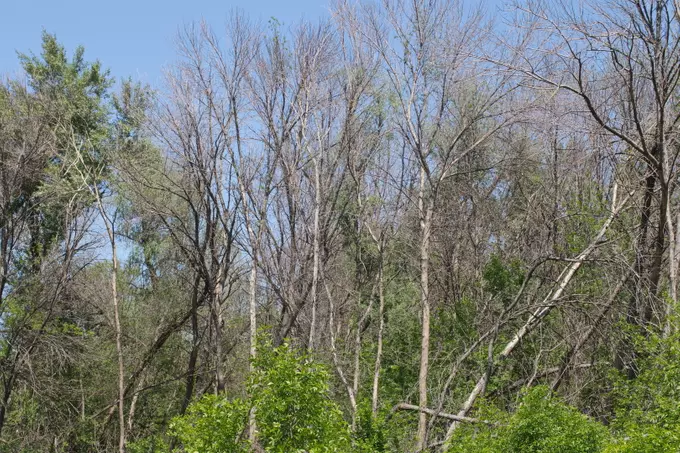
Scientists have described the species composition of microorganisms in the intestines of the larvae of the emerald ash borer. This insect, native to Asia, is now actively spreading in Europe and North America and destroying ash trees, so it is important to control its population. This, in particular, can be helped by representatives of the intestinal microbiome, since among them the authors found parasitic bacteria potentially dangerous for the beetle. The results of the study, supported by a grant from the Russian Science Foundation (RSF), are published in the journal Forests.
The spread of invasive species is an acute problem of modern ecology: the lack of adaptability of local organisms to invaders leads to significant damage to the ecosystem. Thus, the narrow-bodied ash emerald borer, which historically inhabited the territory of Korea, China, Japan and the Far East, at the beginning of the 21st century spread to North America and the European part of Russia. Its larvae damage the conductive system of ash trees, preventing the flow of nutrients from leaves to roots, and can also be potentially harmful to olive trees. The introduction of the borer into North America and Europe led to catastrophic consequences: hundreds of millions of trees died. This beetle is included in the list of the 20 most dangerous quarantine pests for the European Union and is actively studied by experts around the world.
Russian scientists from the A. N. Severtsov Institute of Ecology and Evolution of the Russian Academy of Sciences (Moscow) described the microbiome of the larvae of the emerald ash borer larvae in the European part of Russia for the first time. The larvae were collected in the Moscow region under the bark of the Pennsylvania ash tree. The authors determined the species composition of microorganisms by genetic methods using sequencing, that is, determining the nucleotide sequence of DNA. The researchers deciphered a specific region of the genome, and then compared the obtained sequences with already known databases.
The DNA found belonged to bacteria from 39 different families. Three of them, the most numerous, are Pseudomonadaceae, Erwinaceae and Enterobacteriacea. In previous works of foreign scientists, it was shown that the same families are characteristic of other populations of borers of this species. Thus, these bacteria can be called the basis of the microbiome of this insect.
In addition, during sequencing, the authors found the genes of bacteria from the genus Rickettsia. These are intracellular symbionts characteristic of many families of insects and previously found in other species. For example, it has been shown that rickettsia increase fertility in the tobacco whitefly and help it adapt to environmental conditions. In addition to rickettsiae, potential pathogens of the beetle, rickettsiella, were also found in the microbiome. Significantly, a large amount of Rickettsiella DNA was found in dead borers, and these bacteria may have been responsible for the death of the pests.
“The onslaught of the ash emerald narrow-bodied borer on the European part of Russia and North America is a vivid example of biological invasion. Our study may provide clues to the development of biological methods to combat this insect. We focused on the search for bacteria and fungi associated with the borer, as well as on the search for parasitic nematode worms in its body. Now it is planned to collect and analyze larvae in the Far East, in the natural habitat of the pest,” says Marina Orlova-Benkovskaya, Ph.D.
In the photo: Forest destroyed by the ash emerald narrow-bodied borer. Source: Evgeny Komarov.
Related materials:
Scientific Russia: "Microorganisms from the intestines of insect pests can help in the fight
against them"
Polit.ru: "Bacteria from the intestines of a beetle dangerous for trees are planned to be used
to combat it"
Krasnaya Vesna: "Scientists have identified pathogenic bacteria in the intestines of insect
pests"
Indicator: "Microorganisms from the intestines of insect pests can help fight them"
